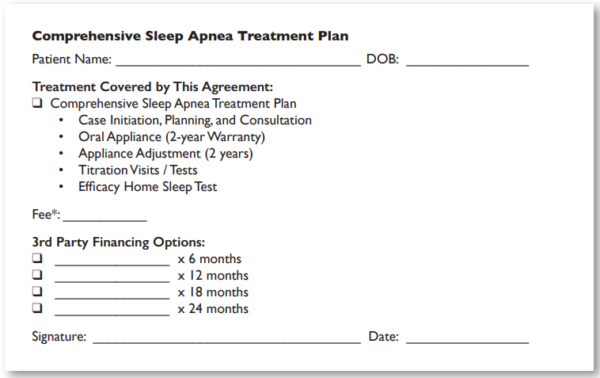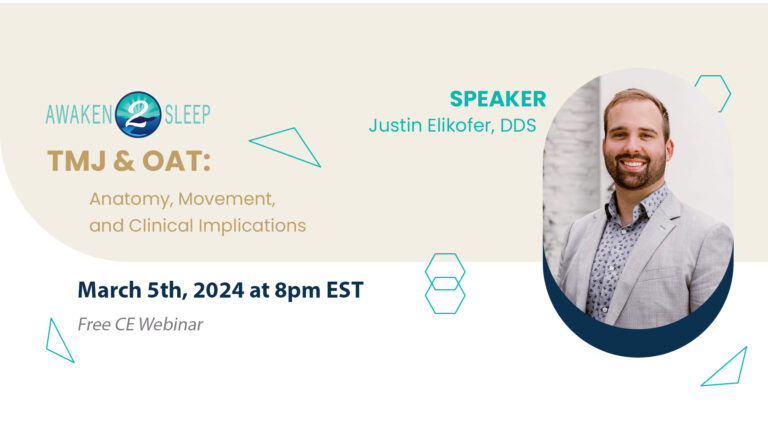Coffee is for Closers: Get Out of Your Own Way
by Michael Cowen
“I don’t understand. You’re telling me your treatment plan conversion rate dropped from 70% to 16%?” Perplexed, I exclaimed, “This makes no sense, Todd!” My friend, “Todd”, owns a successful general dentistry practice in the Midwest and has been treating sleep apnea for a few years. But in the last several weeks, there were 30 patient consults and only 5 moved forward with treatment. What happened?
And that’s when Todd expelled the dirge-like chorus of our day, “COVID.”
Whether you are feeling overcome by challenges, battered by the storm of COVID, or just questioning if this is really the path for you, I encourage you to stay the course. In the famous words of Abraham Lincoln, “Things may come to those who wait, but only the things left by those who hustle.”
So, let’s get our hustle on! Turn face-forward into the winds of adversity, push ahead, rebuild the team, and make the necessary pivots toward future success.
The next step in my friend’s story involved reviewing and tweaking what was occurring (or not occurring) in his sleep consults, more specifically his Financial Treatment Plan.
The Basics
First, let me share a few key details about Todd’s practice:
- Contracted with most dental insurances in a rural Midwest state
- Operates their sleep program on a Fee-For-Service (FFS) model
- Charges a single, demographic-appropriate fee for a comprehensive treatment plan
- Always follows the direction of an overseeing physician for airway treatment
Each patient in these sleep consults has the following:
- Sleep study report that includes the diagnosis of obstructive sleep apnea and recommendation for oral appliance therapy from a Board-Certified Sleep Physician
- All necessary clinical documentation to move forward with treatment
Who’s on First?
At this point, it is important to distinguish between the clinical and financial components of the Comprehensive Treatment Plan. The Clinical Treatment Plan is your sweet spot and includes the sleep test review, discussing the RBAs (risks, benefits and alternatives) of treatment options, and gaining the patient’s decision to move forward with recommended treatment.
The Financial Treatment Plan comprises the concise recitation of value included, payment options available, and collecting payment from the patient. This is presented by your treatment coordinator, a role we affectionately refer to as “the Closer” on the team because they are ultimately responsible for closing the deal. If the train goes off the tracks here, everything comes to a screeching halt. And that helps no one – no better sleep, no improved health, no increased production.
The Comprehensive Treatment Plan
The singular purpose of the Comprehensive Treatment Plan is to create a clear path of value to which the patient can afford to say “yes.” To accomplish this, we must reinforce the value in the treatment plan. Here are some common items that can be included in the treatment plan:
- Case Initiation, Planning, and Consultation
- Oral Appliance (2-Year Limited Warranty)
- Adjustments and Titrations
- Titration HSTs
- Efficacy Home Sleep Study (with interpretation)
If you have additional tests or services that you include with your clinical protocol, this is where you list them. The goal of this format is simple – to ensure that your patients do not feel like they have to spend money every time they come into the practice.
The Closer will briefly discuss each service on the list, clearly emphasizing its value to the patient.

3rd Party Financing
In an FFS model, the role of third-party financing cannot be understated. As a society, we have moved from a “gold standard” to a “credit standard.” We purchase homes, cars, phones, almost everything based on monthly payments. To approach your treatment plan in a way that smacks in the face of standard psychological pricing strategy is not an approach that ends well. Rather than fight the current like the Alaskan King Salmon, go with the flow and reap the benefits.
“But we can’t afford to offer 24-month financing to our patients. It’s too expensive.”
Have you heard someone say this before? Have you said it? While this may hold true in select in-network/contracted environments where your fee schedule is fixed by an insurance company, it could not be further from the truth when you have control over the fee, communicate your value proposition, and have desirable payment options. Consider these facts:
- 24-month financing is less expensive than a “no”
- 24-month financing mirrors your warranty and adjustment period for therapy
Bottom line: You can’t afford NOT to offer 24-month financing, especially when you control the global fee for services rendered.
Communication Best Practices
Below are a few easy communication pointers to tie this all together and increase your case acceptance rates. Don’t be misled by their simplicity. Communication is the #1 reason that DSM practices fail.
Who says what – Separate your treatment plan into the clinical and financial components. Focus your natural strength on the conversation you are best equipped to handle.
Always Build Value – When the Closer is communicating what’s included in the treatment plan, speak clearly and use simple words. Avoid jargon. Touch each point of the paper with the tip of your pen giving the patient the non-verbal cue to read what you’re telling them.
Payments – Handwrite all of the payment options available, i.e. 6, 12, 18, & 24 month options before presenting to the patient. When it comes time to ask the patient for their financial commitment, consider asking, “Which payment option fits best in your budget?”
K.I.S.S. (Keep It Super Simple) – Most have heard of this principle, though slightly adapted here, and it could not be more appropriate. The quickest way to lose a case is to complicate it. Period. Keep it simple and get the “yes.”
Keep hustling. Keep tweaking. Keep striving. Keep giving. And you will keep receiving, I promise.

Michael Cowen, CEO and Founder of Awaken2Sleep, started his journey in sleep medicine in 2003 performing in-lab sleep studies as a classically-trained pediatric sleep technician at Loma Linda Children’s Hospital in Southern California. After recognizing his calling to passionately assist others to help their own patients, Mr. Cowen went on to become an expert in the Business of Sleep Medicine, building and developing a network of sleep centers/DME companies across the United States. In 2015, seeing an opportunity to bring testing and awareness to the life-threatening condition that almost took his daughter’s life, he founded Awaken2Sleep, a company whose vision is to empower dental providers and their teams to treat patients with sleep apnea.








